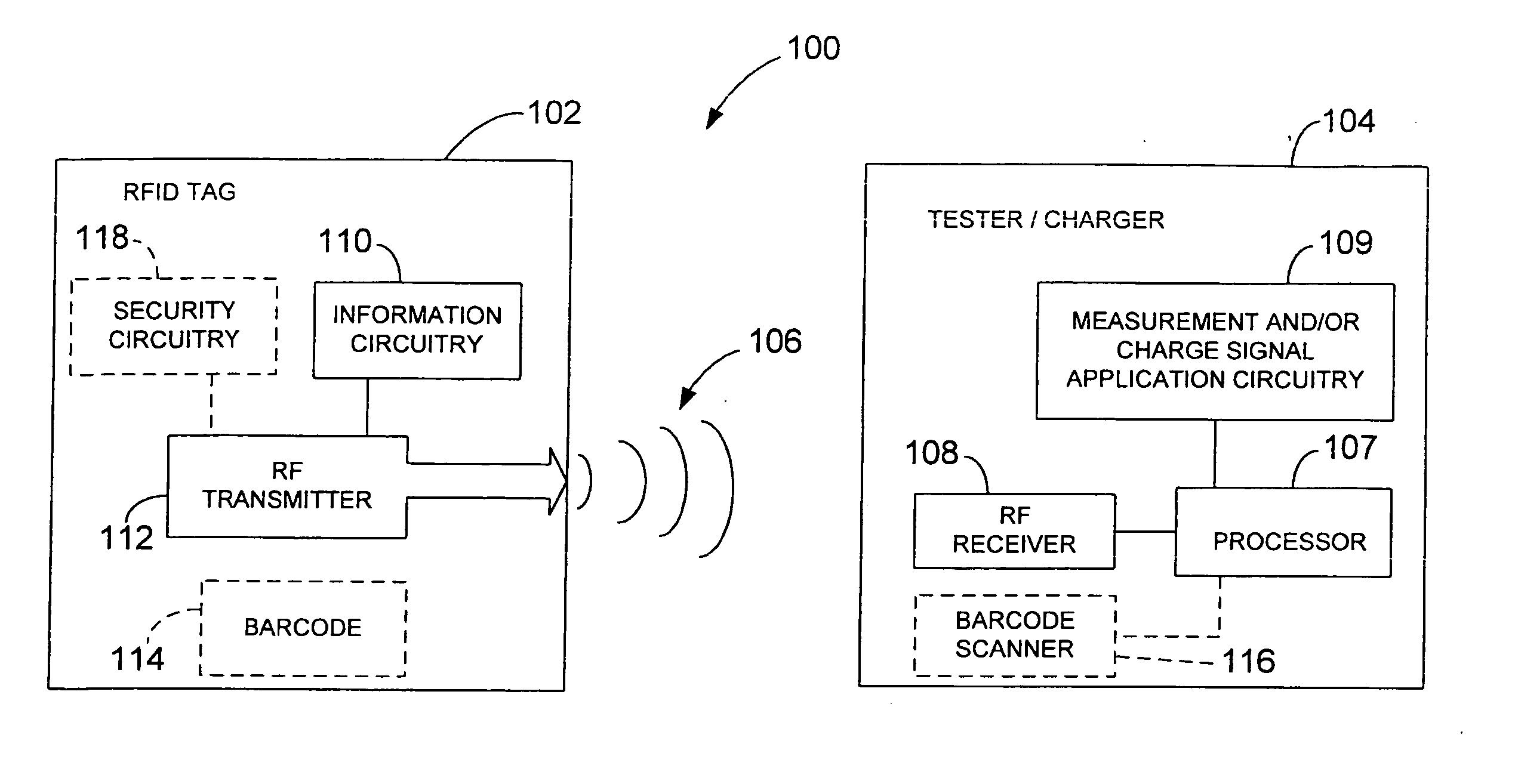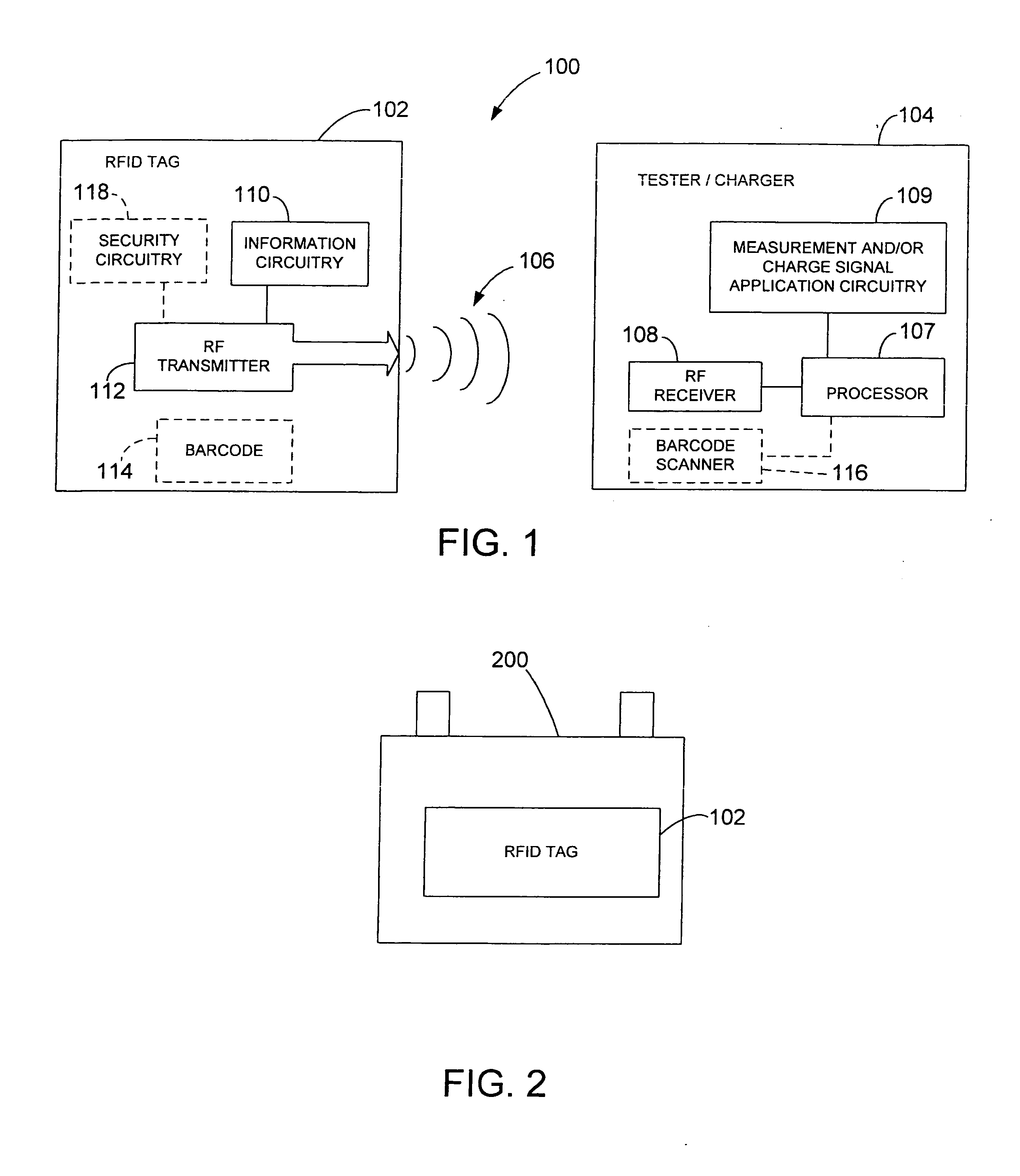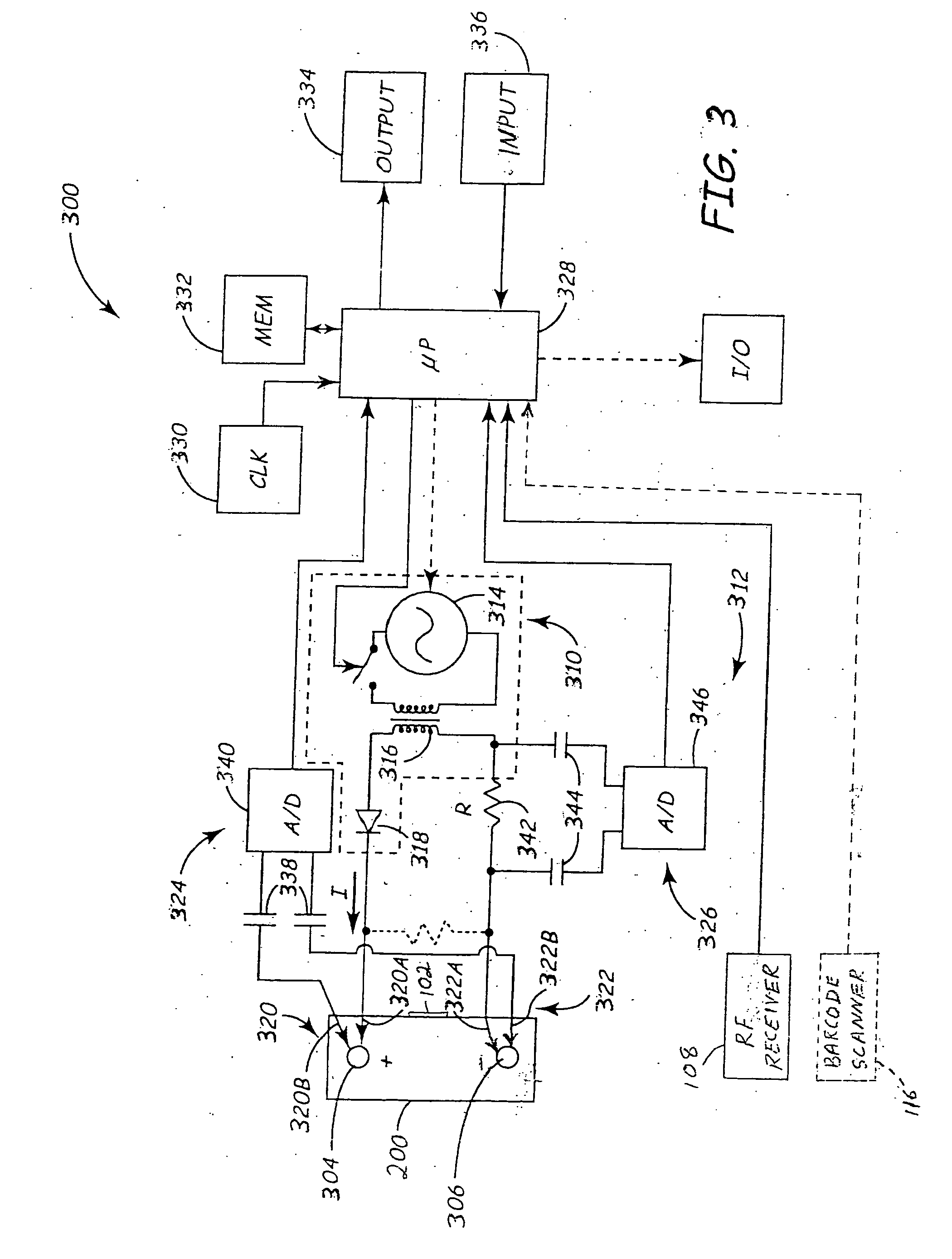System for automatically gathering battery information for use during battery testing/charging
a battery information and automatic collection technology, applied in the field of storage batteries, can solve the problems of inaccurate battery test, improper battery charging, and bad battery determination
- Summary
- Abstract
- Description
- Claims
- Application Information
AI Technical Summary
Problems solved by technology
Method used
Image
Examples
Embodiment Construction
[0012]FIG. 1 is a simplified block diagram of a battery testing / charging system 100 in accordance with an embodiment of the present invention. System 100 includes a radio frequency identification (RFID) tag 102, which can be affixed to a battery (such as 200 (FIG. 2)). RFID tag 102 is configured to transmit stored battery information in the form of RF signals 106. System 100 also includes a battery tester / charger 104 having an embedded / integrated radio frequency (RF) receiver 108, which is configured to receive the transmitted battery information form RF tag 102 when battery tester / charger 104 is proximate RF tag 102. The battery information, which is automatically received by RF receiver 108, is utilized by processor 107 and measurement and / or charge signal application circuitry 109 to test / charge the battery (such as 200 (FIG. 2)). Thus, system 100 overcomes problems with prior art testers / chargers that, in general, require a tester / charger user to enter battery information with t...
PUM
 Login to View More
Login to View More Abstract
Description
Claims
Application Information
 Login to View More
Login to View More - R&D
- Intellectual Property
- Life Sciences
- Materials
- Tech Scout
- Unparalleled Data Quality
- Higher Quality Content
- 60% Fewer Hallucinations
Browse by: Latest US Patents, China's latest patents, Technical Efficacy Thesaurus, Application Domain, Technology Topic, Popular Technical Reports.
© 2025 PatSnap. All rights reserved.Legal|Privacy policy|Modern Slavery Act Transparency Statement|Sitemap|About US| Contact US: help@patsnap.com



